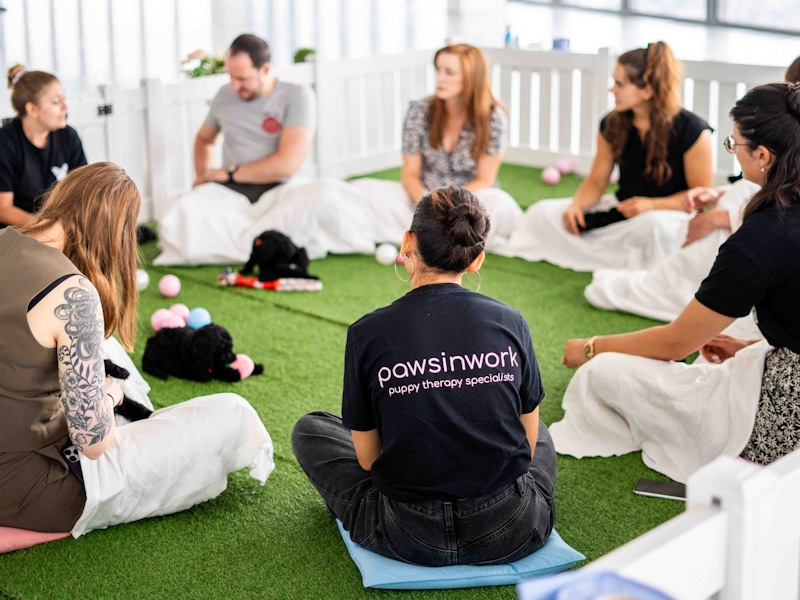How to help your employees manage their work-life balance
Having a great work-life balance can seem like the pot of gold at the end of a rainbow — it’s a lovely idea, yet somehow always out of reach. But it doesn’t have to be that way.
Let’s look at how you can help your teams achieve the elusive “great work-life balance”, creating a happier and more productive workplace.

Why work-life balance is so important
Let’s start by understanding exactly why work-life balance is vital for yourself and your employees.
What happens when we have a bad work-life balance?
A bad work-life balance:
- Negatively impacts your employees' mental health
- Reduces the productivity of your whole team
- Creates unnecessary stress, making it harder for employees to meet new challenges
- Can lead to burnout and even staff leaving your organisation
What happens when we have a good work-life balance?
By contrast, a good work-life balance:
- Improves productivity and creativity
- Leaves your staff feeling empowered and engaged
- Reduces physical and mental health issues across your teams
4 ideas to promote good work-life balance
1. Remind teams to unplug and logoff
Proper downtime is essential for creating a good work-life balance. Your employees need to feel free to be properly present in their personal and social lives, rather than checking their work emails or thinking about tasks for the next day.
Encourage your teams not to check their emails during evenings and weekends. This is a great place to lead by example. Don’t send emails during the evening. If you absolutely must work out of hours, schedule your emails to only send at the start of the next work day.
2. Promote connection between employees
Feelings of loneliness and isolation are the antithesis of a healthy office culture. Give your staff plenty of opportunities to form social connections between and across teams. This creates a supportive atmosphere that allows employees to thrive.
Social events can be elaborate, such as a Christmas party, or more low-key, such as a weekly coffee. For the best results, try letting your employees bond over spending time with cute puppies in our puppy therapy sessions.
3. Encourage employees to use their benefits
Presenteeism — or when employees continue to work despite a drop in productivity due to illness, burnout, etc. — can be pervasive in the workplace. Make sure that your employees know that you support them in making full use of their benefits and entitlements.
This can be as simple as telling an unwell colleague to stay at home until they feel better (which protects the rest of your team as well). Remind staff that they should be taking their annual leave entitlement and encourage them to book their time off. Be flexible to make this easier.
Be alert for workers who put in extra hours on either side of their annual leave to “make up” for their time away. Have a plan to cover their work while staff are on leave to ensure no one comes back to an overflowing in-tray.
4. Check in with employees
Every workplace is unique and your staff will have their own specific challenges and needs. Have regular conversations with your employees to discover what is getting in the way of them having a great work-life balance.
Remember that your team members are the experts in their own lives. They probably have their own ideas of how you can help to improve their work-life balance, but they might not expect you to be ready to listen.
Ask questions. Offer suggestions. Listen to their experiences and ideas. Most importantly of all, make changes based on what they tell you. You probably won’t be able to accept every suggestion but explain your rationale and show that you’ve taken them seriously.
Keep the balance with Paws in Work
Paws in Work is here to help you support your teams and create a workplace with a healthy work-life culture.
A great starting point is our mental health masterclasses. We provide training in topics such as burnout, self-care, and stress awareness which are essential for building a great work-life balance.
And, as we’ve already mentioned, offering puppy therapy is a great way to form connections and introduce a bit of balance and fun into the workday.

How and when to seek help for your mental health
1 in 4 adults face mental health issues in the UK. Discover ways to support your mental health and help others during difficult times.

It’s ok to talk about suicide
Globally, on average, one man dies by suicide every minute of every day. This Movember we had the privilege of speaking to Steve Carr (Mindcanyon) who was kind enough to open up and share his experience with suicide with us.

How to develop a successful workplace wellbeing strategy
! We’re here to guide you on factors to consider when implementing a wellbeing strategy at your workplace. If you’re just beginning your company’s wellbeing journey, here are some suggestions to kick-start your campaign.
